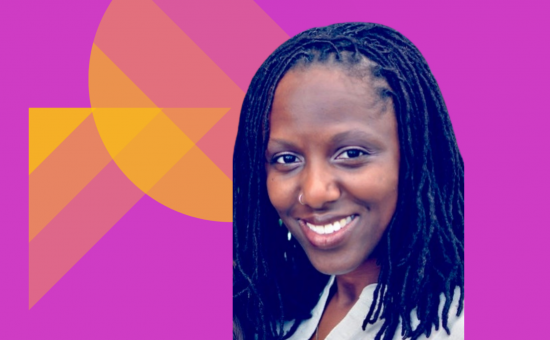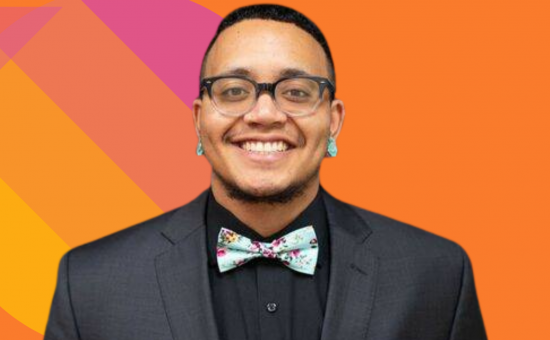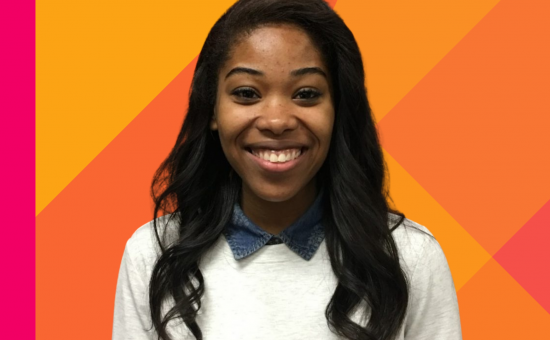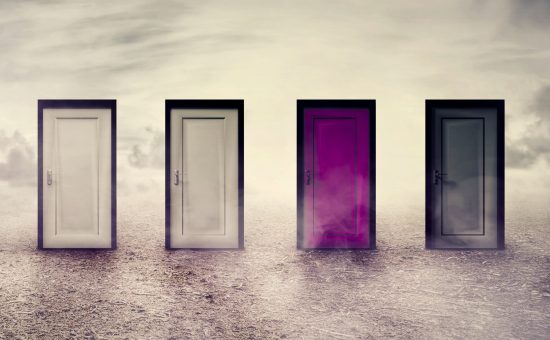Seriously!? Do Sign Language Interpreters Still Need to Talk About Diversity?
Angela Roth presented Seriously!? Do Sign Language Interpreters Still Need to Talk About Diversity? at StreetLeverage – Live 2014 | Austin. Her presentation addressed the depth of the challenges our profession still faces addressing individual and collective cross-cultural reality, respect and responsibility.
You can find the PPT deck for her presentation here.
[Note from StreetLeverage: What follows is an English version of Angela’s talk from StreetLeverage – Live 2014 | Austin. We would encourage each of you to watch the video and access Angela’s talk directly.]
Seriously!? Do Sign Language Interpreters Still Need to Talk About Diversity?
Good morning. First, I have to admit that when Brandon called me to invite me to present at Street Leverage, my reaction when I hung up the phone was panicked: Why did I say yes?! What am I thinking? But I’m thrilled to be here and see so many beautiful people gathered here today.
A common expression in American English is “good job” or “good work.” When I interpret into Spanish, the expression we use might be signed BEAUTIFUL [speaker mouths Spanish word]. In our community, the concept of “pretty” is not ocular, rather it means beauty exuding from the soul. Since I’m aware of the implications of your presence here today, I can describe you all as beautiful souls.
Slide: Seriously!? Do Sign Language Interpreters Still Need to Talk About Diversity?
The question I ask in the title of this presentation may have many possible answers. I’d like to ask you to think back to workshops and presentations you’ve attended in the past. How often were you asked to take action? Many people’s response to a call to action is “but how?” The response is usually that action requires self-analysis and reflection. Often the answer is “Create relationships or partnerships.” If that’s the case, do some self-analysis and reflection, create relationships and work with your partners. OK? Great, that’s it for my presentation!
My point is that that’s truly where the work begins. Someone once said “be careful of your thoughts, because your thoughts become your words. Be careful of your words, because your words become your actions.” There is much emphasis on taking action, but the words and thoughts behind the actions deserve a deeper look.
When you leave today you may find yourself with more questions than answers. For now, I want to share some views on what may hinder our ability to look critically at our thought to action process and reasons behind those barriers. Despite our best efforts, that analysis remains a difficult task. I’d like to highlight three such barriers and the causes behind each.
External Bias
First, I’d like to look externally. If I were to ask you to tell the person sitting beside you about something in the news that held bias, perhaps a negative view of a particular group or event, you could do it easily. That’s an example of bias coming from an outside source. But biases and judgments originate within communities of which we’re a part. No community is immune to that dynamic. We carry and internalize the larger world’s paradigms within us, and they, in turn, affect our relationships.
This phenomenon is not unique to sign language interpreters, although it happens to be our focus today. We must remember that there is diversity in every interaction we have throughout our day, in every person with whom we have contact. For every relationship that we have, don’t have, or desire, appearances may be misleading. A seemingly pleasant relationship, even with those we love, could conceal issues below the surface. In that vein, I’d like to return to addressing the three barriers.
Slide: “The DEPTH of the unconscious effect on each of us from our communities is the proverbial iceberg”
We need to understand our unconscious selves at the deepest level, and that depth of analysis requires a lot of work. Despite it being a sensitive topic, we must proceed regardless.
“Groupishness”
The first of the three unconscious barriers we face comes from a book called “The Righteous Mind.”1 Even the best of individuals still may heartily disagree on issues such as religion and politics. The reasons behind this are numerous; however, one, in particular, can be referred to as “groupishness.” [Slide at 6:50 on video.] This refers to the fact that people tend to gather and align themselves with one another. This is not in and of itself a negative thing, but we should be cautious of that behavior then leading to the gradual widening of the gap between affiliated versus non-affiliated groups. Studies have shown that the tighter-knit a group becomes, the more likely members are to dismiss and discount views that differed from their own. [Slide at 7:48 on video.] I’ll pause a moment; it seems the audience wanted more time to read the previous slide. All set? The wall projection takes longer to load than my teleprompter.
The Dangers of “Only”
So, the slide says that groups become so entrenched that members are unable to even understand opposing views. This is significant. Often it leads such groups to the next point, which is “only.”[ Slide at 8:50 on video] This is a dangerous place to be. As an example, my mother and I once were walking to the mall, chatting as we went. All of a sudden, a man passing by stopped in front of us and forcefully ordered us to “speak English!” I was in disbelief. What would lead him to do that? He was obviously speaking from an entrenched group perspective where only one view existed.
This manifests in ideas like “only the wealthy allowed here,” “only people from this certain family,” “only Whites,” “only oral-educated,” and “only English.” Such homogeneity can be a comfort to some, but be careful: allowing the practice of “only” creates walls dividing groups even further. Those who wish to connect across the divide must work even harder to bridge the gap, and once dismantling one wall and connecting to a new group may find they have alienated themselves from their original affiliation. In aligning to one group, one loses ties to others. This is one example of a barrier.
Emotions vs. Reason
Emotions overpower rational thought. Despite our best intentions to be thoughtful in emotional situations, studies have shown that this is the case. When in a confrontational situation, we may automatically make assumptions about the person based on our emotional reaction. Past events are triggered when we become emotional, and we unconsciously and mistakenly can tie memories to our current experience to form a judgment on what’s happening.
Picture entering a room where you must speak with a receptionist. She is currently on the phone and gestures for you to wait a moment. One person in that situation may be nonplussed while another might take great offense at being ignored. An explanation for the difference between the two reactions could be that the offended person had had a negative formative experience with a classmate with red hair, made a snap judgment based on emotion, and was now projecting that experience of humiliation onto the current situation. Whether you agree or not, there’s more evidence of this happening than you may think.
Another example of premature judgment occurred in a room where I sat with another White interpreter. A man came in briefly and asked the White interpreter about a word he wasn’t familiar with. The interpreter shrugged, and the man left without asking me if I knew. He had assumed by looking at me that I would not have known–that I had a deficiency in some way. Remember that as much as we may stand by our initial reactions, our emotional memory is sloppy. Therefore, our reactions may be inaccurate.
The Case for Further Conversation about Diversity and Inclusion
The third kind of barrier to self-awareness relates to conversation. As much as lip service is paid to the desire to foster open dialogue on critical issues, this cannot occur without the potential for barriers. The compulsion to be seen as correct for reasons of personal security can be strong, as can be the narrow, limited or “local” lens some take on issues being discussed. Still others might attempt to dismiss the need to discuss issues at all and silence debates with what they may view as high-minded logic. The consequences of the conversational barrier results in either one-sided doctrinal rhetoric or a shutting out of minority views completely.
This kind of barrier is of course not unique to me or my experience. It can occur anywhere in our lives and work, on any level from interpersonal interactions to our agencies, organizations and in wider society. It is a common thread woven among all with minority status.
Reality, Respect and Responsibility
I want to talk now about three people who exhibit the following qualities: Reality, Respect, and Responsibility. One individual expressed that when they started learning American Sign Language, they experienced judgment from a CODA for not being a native user. When that person chose not to attend an interpreter training program they were judged as unprofessional. But the Deaf community beckoned to that person regardless.
I remember when I was a new, awkward signer and still wet behind the ears as an interpreter. An old Deaf woman asked me if I was a CODA, and I ducked my head and shook it, “no.” She looked at her daughter and said that I signed like family. I will remember that incredibly touching comment until the day I die, because you see, in my culture we equate the concept of family with a deep cultural understanding, much as Deaf culture defines it.
I remember a situation at a past RID conference where, long story short, there was a strong effort made to at last have more diversity represented among interpreters- because of course, sign language interpreter demographics are notoriously and unceasingly White. One of the coordinators was MJ Bienvenu. There were unending announcements and comments emphasizing the efforts toward diversity. I decided to approach two of the coordinators and expressed that if the only reason that I was present at the conference was because of the color of my skin and not due to my skill as an interpreter, then I didn’t want to be there. I saw in MJ’s eyes her solidarity with and deep understanding of my words, and in that moment we connected completely. I can understand how if the response to my comment was instead deflecting to my feelings of discomfort, life for me might have looked totally different. But because of the intense emotional connection I experienced, I’m still here today. Thank you, dear MJ.
The third person in our field I want to mention is Bonnie Kraft. I remember that I was offered an opportunity to interpret at what I saw was a very important conference, and I was incredibly excited to have merited an invitation. During one session, I was interpreting for a very fast speaker and was, therefore, signing very quickly. Upon seeing my team’s strategy, I realized I was using the wrong approach. My team eliminated some affect in favor of signing clearly. Seeing the “game” for what it was, I decided to follow suit. You must understand, however, that in my culture, we value a person’s style and affect highly, so I naturally prioritize incorporation of a speaker’s personality into the interpretation. But most of the White Deaf audience did not prefer that and instead favored an approach that prioritized the content. I was very receptive to that feedback and understood that perspective entirely. Unfortunately, before I had a chance to modify my work, it was arranged that another interpreter replace me for the next segment. I was unhappy and tearful, but then my team, Bonnie, responded with “Oh, you’re replacing us? That’s just fine.” As we prepared to leave, the coordinator tried to explain that only I was being replaced, to which Bonnie said “We’re a team. If you replace her, you replace me too.” For her to say that took astounding courage and responsibility.
Why don’t we have the courage to look around and ask ourselves who is not present, and if they were, if they would truly be a part of the group?
In Conclusion
Now, I love sign language for many reasons. I find it very compelling. I speak Spanish, English and a little French and German, but when I discovered ASL I found that I loved the visual medium. I think we can learn a lot from signs themselves if we let them teach us. For example, the sign for DIVERSITY. What do you see in the production of that sign? (Please reference ASL video at 19:37.) There are many equal yet different moving elements in the sign. Now consider the sign for HARMONY. (Please reference ASL video at 19:54.) It also represents many of something, beginning in one place then moving to another, all the while becoming stronger. I’d like to turn to your neighbor now and try to produce the sign HARMONY, each contributing one hand to this two-handed sign. It’s not easy, is it? That means that to have harmony, it takes work- as the last poet- I think it was the poet, right?- mentioned this morning. Next slide.
“Give me the courage to accept the ones I cannot change, the courage to change the one I can, and the wisdom to know it’s me.”
Thank you.
References
1 Haidt, J. (2012). The righteous mind: Why good people are divided by politics and religion. New York: Pantheon Books.













